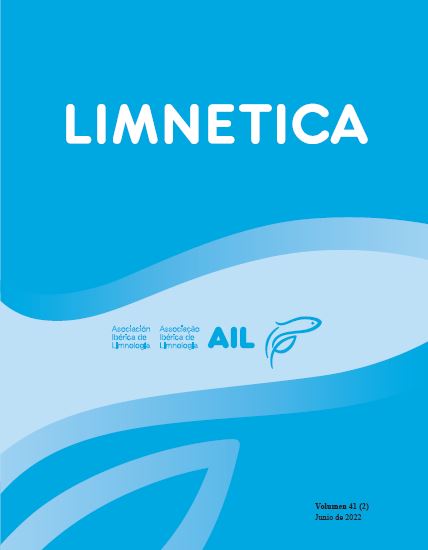Contribution of alien peracarid crustaceans to the biocontamination of benthic macroinvertebrate assemblages in Croatian large rivers
Abstract
Peracarid crustaceans (orders Amphipoda, Isopoda and Mysida) are one of the most important groups of invaders in fresh and brackish waters. Although large rivers in Croatia have been heavily invaded by peracarid crustaceans, little is known about their impact on local benthic macroinvertebrate assemblages. The main aim of this study was to investigate the contribution of alien Peracarida to the biocontamination of macroinvertebrate assemblages in Croatian large rivers as a proxy measure of their impact. Quantitative sampling was conducted twice (2015 and 2016/2017), at 48 sites on four large rivers (Danube-4, Sava-21, Drava-20, Mura-3). Physicochemical parameters were measured eight times during 2015 and 2016. In total, 16 species were recorded, five native and 11 alien species. The highest number (10 alien species, most from genus Dikerogammarus and Chelicorophium) were found in the Danube River, while subsets of alien species were found in the Sava (5 spp.) and Drava Rivers (6 spp.), and no alien species were found in the Mura River. The most upstream reaches of the Mura, Drava, and Sava Rivers in Croatia have not yet been colonized by invasive peracarids and the native peracarids are still abundant there. In the Drava River, alien Peracarida had the highest densities. Significant negative correlations were established between the number of native taxa and alien Peracarida species. Proportions of alien peracarids in the total density of benthic macroinvertebrates were spatially variable, the highest average values in the Drava River (24.4 %), and lower in the Danube (20 %) and the Sava (17.7 %) Rivers. Alien Peracarida had the most important contribution to the richness and abundance contamination of macroinvertebrate assemblages. The upstream spread of invasive peracarids will increase biocontamination and could cause a decline of native species richness and abundance in the most upstream reaches of the Sava and Drava Rivers. To prevent further upstream spread of alien Peracarida, “check, clean and dry” protocols should be included in the national regulations.
##submission.downloads##
Pubblicato
Fascicolo
Sezione
Licenza
Los autores que publican en esta revista están de acuerdo con los siguientes términos:
- Limnetica está bajo una licencia de Creative Commons Atribución-NoComercial 4.0 Internacional.
b. Los autores pueden establecer por separado acuerdos adicionales para la distribución no exclusiva de la versión de la obra publicada en la revista (por ejemplo, situarlo en un repositorio institucional o publicarlo en un libro), con un reconocimiento de su publicación inicial en esta revista.
c. Se permite y se anima a los autores a difundir sus trabajos electrónicamente (por ejemplo, en repositorios institucionales o en su propio sitio web) antes y durante el proceso de envío, ya que puede dar lugar a intercambios productivos, así como a una citación más temprana y mayor de los trabajos publicados (Véase The Effect of Open Access) (en inglés).


